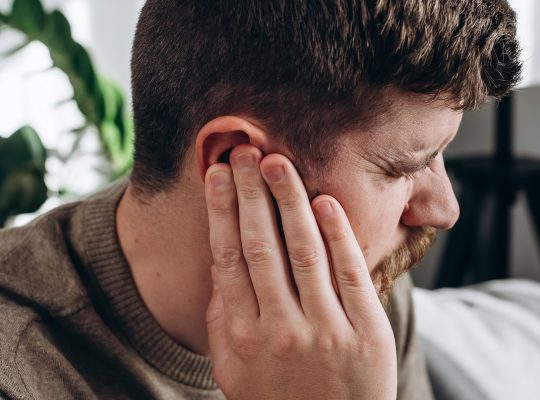Earplugs are a common solution for protecting your hearing in noisy environments, but there is a limit to how much sound they can block out. The attenuation of earplugs is often stated in decibels (dB), but why do earplugs stop at about 33 dB of attenuation and not make you completely “deaf”? In this blog, we dive deeper into the reasons behind this limitation and the role that bone conduction plays in the process of sound transmission to our hearing organ.
How Do Earplugs Work?
Earplugs work by blocking sound waves that enter your ear canal through the air. When you place earplugs in your ears, the sound waves that normally enter your ear canal through the air are attenuated. This causes you to hear less noise, which is important in noisy environments such as concerts, construction sites, and factories. The degree of attenuation is usually measured in decibels (dB), with a higher value meaning more sound is blocked.
Maximum Attenuation of Earplugs: 33 dB
Why do earplugs stop at an attenuation of about 33 dB, even when using the best hearing protection? This has to do with the way sound is processed in our bodies. When sound waves reach the ear canal, they are normally transmitted through the air to the ossicles (the malleus, incus and stapes) in the middle ear. These bones convert the sound waves into vibrations, which are then sent through the cochlea to the brain, where they are perceived as sound.
However, sound can be conducted not only through the air to the ear, but also through the bones of the skull. This process is called “bone conduction. Sound waves can travel through the skull bones to the inner ear, meaning that even if air conduction is blocked by earplugs, sound can still pass through the bones to the hearing organ.
What is Bone Guidance?
Bone conduction refers to the phenomenon whereby sound waves reach the inner ear through the bones of your skull. This happens, for example, when you wear earplugs, which block the air conduction of sound but not the bone conduction. The skull is a relatively good conductor of sound, so sound that is blocked through the air can still reach the ear canal through the bones. This is one of the main reasons why earplugs can only provide a limited amount of attenuation.
Even the best hearing protection devices, such as state-of-the-art earplugs, cannot completely stop the bone conduction of sound. When sound reaches the ear through the bones, the attenuation that earplugs can provide is usually limited to a maximum of about 33 dB. This means that even in very noisy environments, the attenuation that earplugs can provide does not exceed this limit.
Why is 33 dB the Limit?
The 33 dB attenuation limit has to do with the physical properties of sound and how it is processed by our bodies. Sound waves are vibrations in the air, and when these air vibrations reach your ear canal, earplugs can partially block them. But when sound reaches the ear through the bones of the skull, it is more difficult to block these vibrations because bones are good conductors for sound.
Bone conduction ensures that sound still retains some of its power even when air conduction is attenuated. This explains why earplugs can be effective in noisy environments in some cases, but their effectiveness is limited by the way sound is conducted through the bones.
Earmuffs: A Better Protection
Because earplugs have a limit in the amount of sound they can attenuate, it may be necessary to wear ear muffs for extra protection, especially in environments with extremely high noise levels. Earmuffs can block sound through both air conduction and bone conduction, making them often more effective than earplugs in certain situations. They provide broader noise protection, which is crucial in work environments where noise levels often exceed 85 dB.
Earmuffs work by completely encasing the ears, helping to better isolate sound. This is especially useful in situations where earplugs alone do not provide sufficient protection. In addition, earmuffs can be worn in conjunction with earplugs for added attenuation and protection, especially in industrial environments or during concerts.
What Does This Mean For Hearing Protection?
The 33 dB attenuation limitation in earplugs emphasizes the importance of choosing the right hearing protection for the situation. Earplugs can be a good choice for moderate noise levels, but for more extreme environments, such as airplanes, concerts or construction sites, ear muffs can provide the extra protection you need.
In addition, it is important to understand that earplugs not only block sound waves in the air, but also depend on the bone conduction of sound. Therefore, it is important to choose your hearing protection based on the type of sound you are exposed to and the noise level in that environment.
Conclusion
The reason why earplugs attenuate a maximum of 33 dB is because of the combination of air conduction and bone conduction of sound. Although earplugs can be very effective in reducing air-conducted sounds, they cannot completely block the bone conduction, resulting in a limit of about 33 dB. In noisy environments where higher protection is needed, ear muffs may be a better choice, as they can block both air and bone conduction of sound. It is important to always choose the right hearing protection depending on the noise conditions and the level of protection you need.






